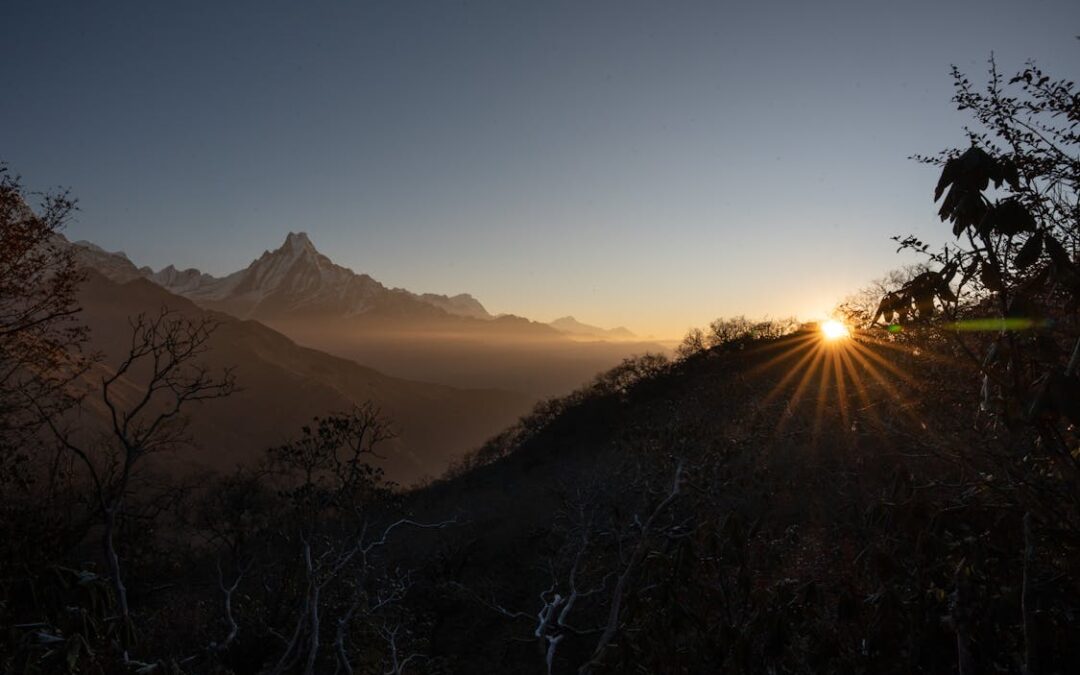Nestled in the lap of the Himalayas, Nepal is not just a land of breathtaking mountains and serene landscapes; it is a cradle of ancient wisdom and spiritual practices. Over the years, Nepal has evolved into a global hub of yoga education, attracting seekers, practitioners, and teachers from every corner of the world. But what makes Nepal the epicenter of yoga learning and spiritual growth? Let’s delve into the factors that have shaped Nepal’s journey to becoming a global hub of yoga.
The Historical Roots of Yoga in Nepal
Yoga’s connection to Nepal dates back thousands of years. As the birthplace of Gautama Buddha, the country has been a spiritual haven for sages, monks, and mystics seeking enlightenment. Many ancient scriptures suggest that Nepal played a significant role in the development and spread of yoga and meditation practices.
The ancient practice of yoga flourished in the Himalayan regions, where hermits and rishis meditated in search of higher truths. These secluded mountains provided the perfect environment for spiritual exploration, free from worldly distractions. The rich spiritual heritage of Nepal created fertile ground for the practice of yoga to grow and spread in the global hub of yoga.
The Role of Nepal’s Spiritual Landscape
Nepal’s unique geographical and spiritual landscape makes it an unparalleled destination for yoga enthusiasts. The towering Himalayas, often referred to as “the abode of the gods,” exude an aura of tranquility and divinity. Practicing yoga amidst these majestic peaks creates an experience that is both grounding and elevating.
Nepal is also home to numerous sacred sites, including:
- Lumbini: The birthplace of Lord Buddha, a UNESCO World Heritage Site.
- Pashupatinath Temple: A revered Hindu shrine dedicated to Lord Shiva.
- Muktinath Temple: A sacred pilgrimage site for both Hindus and Buddhists.
These spiritual landmarks attract millions of visitors annually, many of whom come to learn and practice yoga as part of their spiritual journey in the global hub of yoga.
The Rise of Yoga Schools and Retreats in Nepal
In recent decades, Nepal has witnessed a remarkable growth in yoga schools, ashrams, and retreat centers. These institutions offer a variety of programs catering to beginners, advanced practitioners, and even aspiring yoga teachers.
Some key features that make Nepal’s yoga schools stand out include:
1. Authentic Teachings
Nepalese yoga schools prioritize authenticity, often combining traditional Hatha and Ashtanga yoga practices with teachings from ancient texts like the Yoga Sutras and Bhagavad Gita. Many schools also integrate meditation, pranayama, and Ayurveda into their programs, offering a holistic approach to well-being.
2. Qualified Instructors
The instructors at Nepal’s yoga schools are often highly experienced and deeply rooted in yogic traditions. Many of them have trained under renowned gurus and bring a wealth of knowledge to their teachings.
3. Immersive Experiences
Yoga retreats in Nepal offer more than just physical practice. They provide immersive experiences that include trekking in the Himalayas, visiting sacred sites, and engaging in cultural activities. These experiences create a deeper connection to yoga as a way of life rather than just a practice.
Nepal’s Contribution to Yoga Teacher Training
One of the reasons Nepal has become a global hub of yoga is its focus on yoga teacher training (YTT) programs. Certified by international organizations like Yoga Alliance, these programs attract students from around the world who aspire to become yoga instructors.
Nepal’s YTT programs emphasize not only physical postures but also the philosophical and spiritual dimensions of yoga. Students learn about the Eight Limbs of Yoga, mindfulness practices, and the art of teaching, ensuring they graduate as well-rounded practitioners.
The Role of Tourism in Promoting Yoga
Tourism plays a significant role in establishing Nepal as a global hub of yoga. Millions of visitors come to Nepal every year, drawn by its natural beauty and spiritual allure. Many of these tourists incorporate yoga into their travels, whether through short retreats or intensive training programs.
Additionally, organizations like the Nepal Tourism Board actively promote yoga and wellness tourism. By highlighting Nepal’s rich yogic heritage, they attract travelers seeking meaningful experiences that go beyond typical sightseeing.
The Influence of Globalization
Nepal has rised as a global hub of yoga. While it has brought international attention to Nepal’s yogic traditions, it has also encouraged the integration of modern practices. Today, Nepal’s yoga schools skillfully blend traditional teachings with contemporary approaches, making yoga accessible to a global audience.
For instance, some yoga centers offer workshops on stress management, corporate wellness, and mindfulness practices tailored to modern lifestyles. This adaptability ensures that Nepal be renowned as global hub of yoga and the education remains relevant and appealing to people from diverse backgrounds.
Challenges and Opportunities
While Nepal’s status as a global hub of yoga continues to grow, it is not without challenges. Maintaining the authenticity of yoga teachings amidst commercialization is a pressing concern. However, many schools and organizations are committed to preserving the integrity of yoga, ensuring that its spiritual essence remains intact.
On the flip side, the increasing popularity of yoga presents opportunities for Nepal to further solidify its position as a leader in global hub of yoga. By investing in infrastructure, promoting sustainable tourism, and fostering cultural exchange, Nepal can continue to attract and inspire yoga enthusiasts worldwide.
Why Nepal Stands Out as a Yoga Destination
Among the many countries offering yoga education, Nepal stands out for its unique blend of natural beauty, cultural richness, and spiritual depth. Practicing yoga in Nepal is not just about physical postures; it’s about connecting with the divine energy that permeates the land.
Whether it’s meditating by the serene Phewa Lake in Pokhara, attending a sunrise yoga session in Nagarkot, or trekking to remote monasteries for spiritual insights, Nepal offers an unparalleled experience for yoga practitioners.
Conclusion
Nepal’s journey to becoming a global hub of yoga education is a testament to its rich spiritual heritage, breathtaking landscapes, and commitment to preserving authentic practices. It is a place where ancient wisdom meets modern aspirations, offering a sanctuary for those seeking physical, mental, and spiritual growth.
As yoga continues to grow in popularity worldwide, Nepal’s role as a beacon of yogic learning and inspiration will undoubtedly shine even brighter. For anyone looking to deepen their practice or embark on a transformative journey, Nepal remains an unmatched destination in the global hub of yoga.

